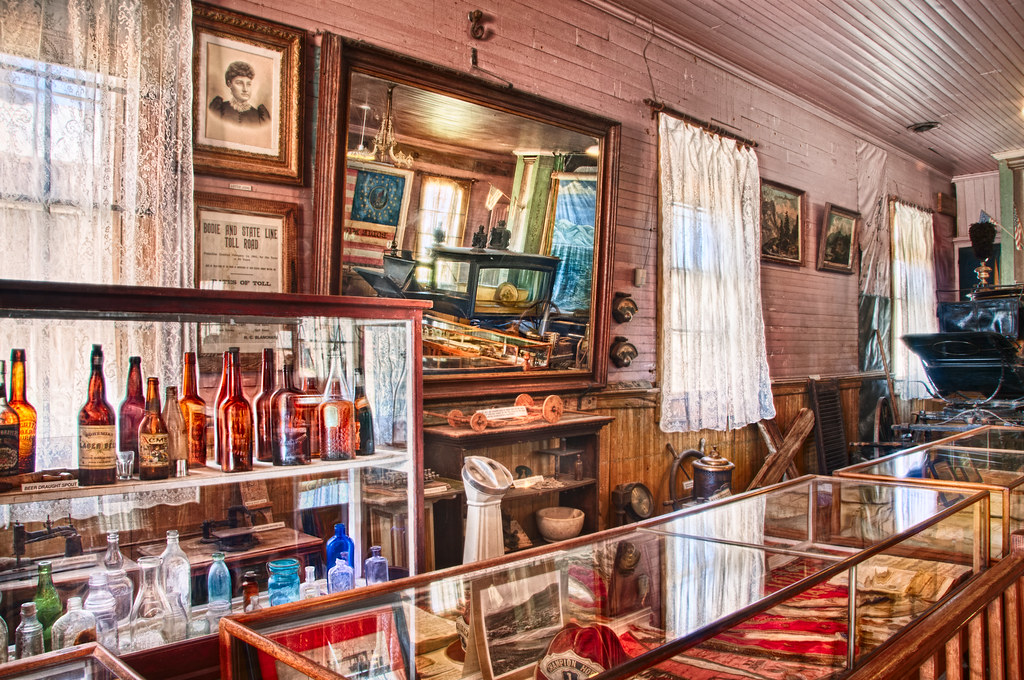
This image of the museum at the old ghost town of Bodie was created from six exposures using High Dynamic Range (HDR) techniques. Each exposure as at 18mm, f/22, and ISO 200, with my camera on a tripod. The exposure times ranged from 1/60 of a second to six seconds.
I assembled the images using Nik’s Merge to Efex Pro plug-in and hand layering in Photoshop.
Most people think the point of HDR imaging is to extend the range of lights and darks one can capture in an image, and it is true that HDR works to extend dynamic range. No “normal” single exposure could render both the bright highlights of the daylight coming in through the lace curtains in this image and at the same time capture the dimly lit contents of the vitrine display in the museum, or the shadowy, poorly lit corners shown in the mirror.
But for me the real fun of HDR kicks in when you consider how things are rendered. There’s a glowing and wonderful quality to the glass surfaces in this HDR image, particularly the mirror. In other words, not only does HDR capture more darks and lights than conventional imaging. HDR also allows one to depict elegant, stylized, versions of objects that look almost as if they belong in a photorealistic painting.
Related stories: Gone with the Wind; Arrested Decay.
Interested in learning more about my presentations or workshops? Check out the Photography with Harold Davis meetup group.
Pingback: The Path of HDR | Photoblog 2.0
Pingback: Smoking Gun
Pingback: Prints on Slickrock Pearl – Harold Davis